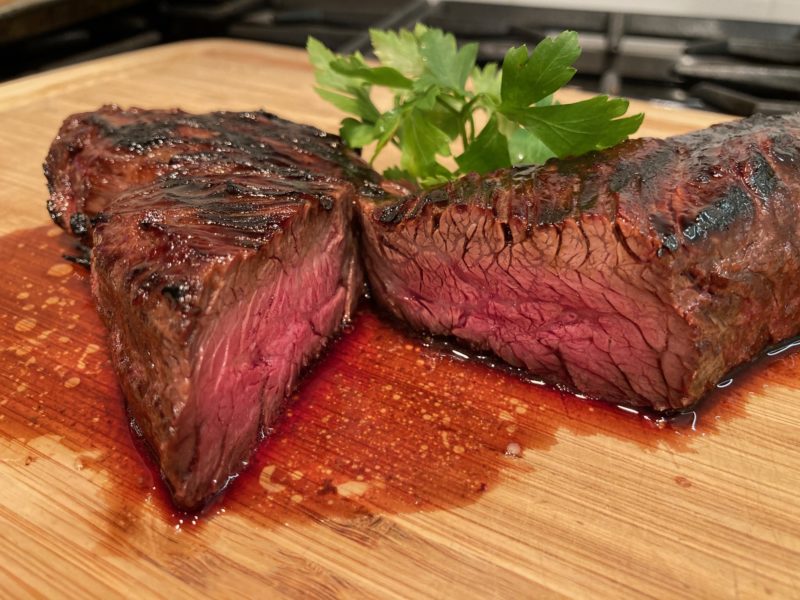
Chamberlains of London – Red liquid in steak often raises concerns for many diners, especially when ordering a medium-rare steak. Some may wonder whether it is safe to consume. Let’s explore what this red liquid really is and whether it poses a health risk.
The red liquid in steak is not blood, as many people assume. It is actually myoglobin, a protein found in muscle tissue. Myoglobin contains heme iron and stores oxygen in muscles. This protein is similar to hemoglobin, which carries oxygen in human blood.
Myoglobin is present in red meat such as beef, lamb, goat, and pork. It is responsible for the red color of these meats. The more myoglobin present, the redder and darker the meat becomes. According to Michigan State University, older animals and specific muscle types have more myoglobin.
When you cook meat, the myoglobin reacts to heat and changes color. In rare steaks, myoglobin does not completely change color, which is why the meat retains a reddish hue. Additionally, the meat’s higher water content in medium-rare steaks causes it to release the liquid.
“Read about: Waroeng Steak and Shake Review: Affordable, Delicious, and Halal Steaks”
Since the red liquid is not blood, consuming a medium-rare steak with this liquid is generally safe. The Academy of Nutrition and Dietetics recommends cooking steak to an internal temperature of 62°C to avoid bacterial contamination.
Once the steak reaches the desired temperature, it should rest for at least three minutes before consumption. Using a meat thermometer helps ensure that the steak is cooked to a safe level. Therefore, you can confidently enjoy a medium-rare steak, provided it is cooked correctly.
While it is safe to eat medium-rare steak, it’s crucial to follow proper cooking guidelines to avoid health risks. Make sure to cook the steak to an internal temperature of 62°C. Using a meat thermometer allows you to check the internal temperature accurately.
It is also important to ensure safe food handling practices during preparation. Clean hands and cooking tools are essential to prevent contamination. If you prefer steak well-done, cook it to an internal temperature of at least 71°C to guarantee safety.
“Read more: Indulgent and Aromatic: How to Make Caramel Macchiato at Home”
Ground meat, such as that used in burgers, carries more risk than steak. Ground beef undergoes a process where bacteria can spread throughout the meat. Bacteria that are present in the equipment used to grind the meat can contaminate the entire batch.
For ground meat, it is vital to cook it thoroughly to an internal temperature of 71°C. This ensures that the meat is safe to consume. Unlike whole cuts of steak, ground meat requires extra caution due to the higher risk of bacterial contamination.
While eating medium-rare steak is generally safe, there are health concerns regarding excessive consumption of red meat. The World Health Organization (WHO) has warned that eating too much grilled red meat may increase the risk of cancer by up to 30%.
It is essential to enjoy red meat in moderation. A balanced diet that includes a variety of protein sources can help reduce the long-term health risks associated with red meat consumption.
